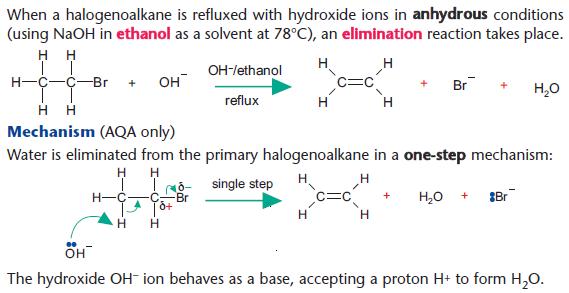

The ammonia removes a hydrogen ion from the ethylammonium ion to leave a primary amine - ethylamine. There is then the possibility of a reversible reaction between this salt and excess ammonia in the mixture. This is just like ammonium bromide, except that one of the hydrogens in the ammonium ion is replaced by an ethyl group. In the first stage, a salt is formed - in this case, ethylammonium bromide. We'll talk about the reaction using 1-bromoethane as a typical primary halogenoalkane. You couldn't heat this mixture under reflux, because the ammonia would simply escape up the condenser as a gas. The reaction is carried out in a sealed tube. The halogenoalkane is heated with a concentrated solution of ammonia in ethanol.

Use the BACK button on your browser to return to this page. Important! If you aren't sure about the difference between primary, secondary and tertiary halogenoalkanes, it is essential that you follow this link before you go on. The reaction of primary halogenoalkanes with ammonia If you are interested in further substitution reactions, you will also find a link to a separate page dealing with these.

If you want the mechanisms explained to you in detail, there is a link at the bottom of the page. This page gives you the facts and simple, uncluttered mechanisms for the nucleophilic substitution reactions between halogenoalkanes and ammonia to produce primary amines. THE NUCLEOPHILIC SUBSTITUTION REACTIONS BETWEEN HALOGENOALKANES AND AMMONIA Nucleophilic substitution - halogenoalkanes and ammonia


 0 kommentar(er)
0 kommentar(er)
